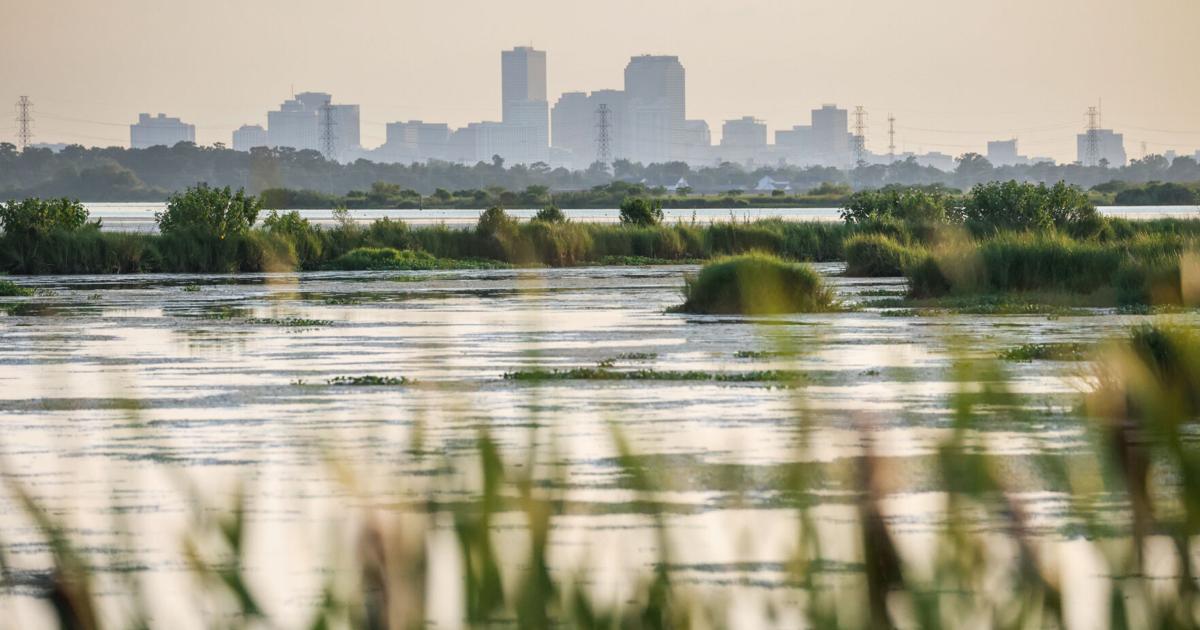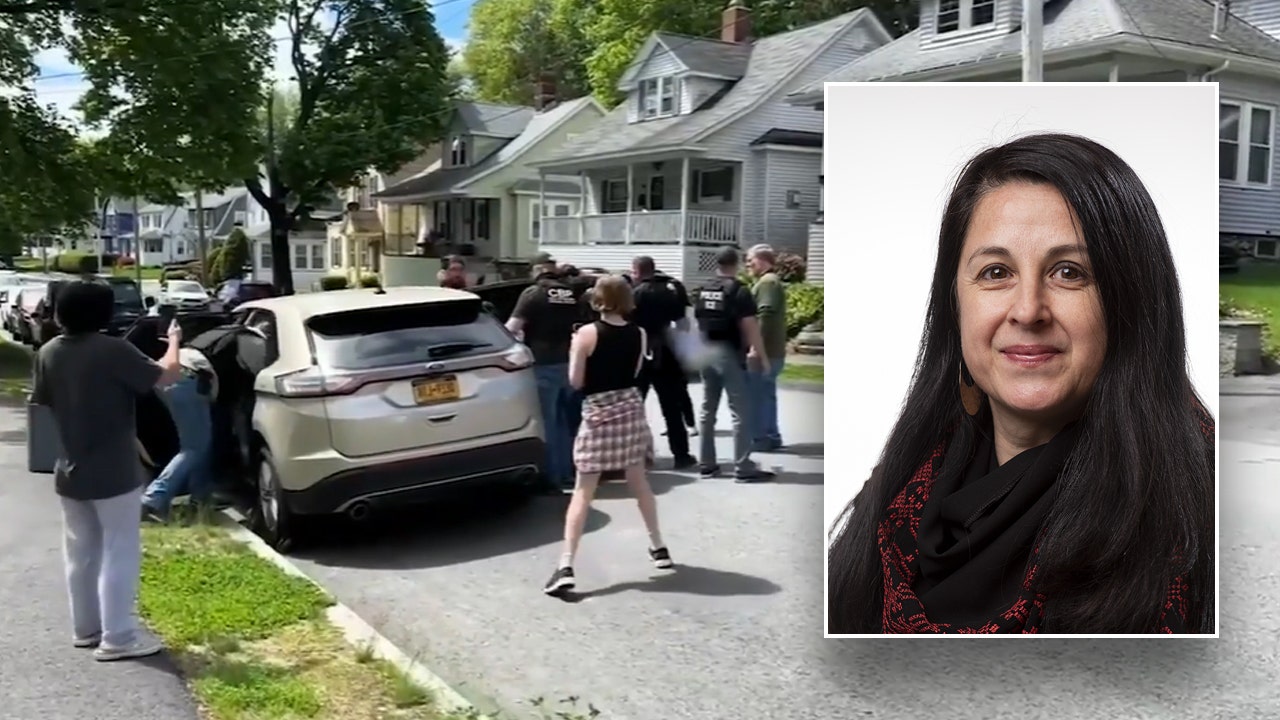Louisiana
Louisiana 2050: What you need to know about our vanishing coast

The newspaper’s project examining the future of south Louisiana at a time of climate change, sea level rise and intensifying storms paints a stark picture of the challenges ahead. Read the full story here and see our interactive maps breaking down the risks by parish here.
Here are five key takeaways from the project:
A disappearing coast
Louisiana may be the state most at risk from climate change, and we are not prepared. Accelerated sea level rise will combine with long-existing threats, such as erosion and subsidence, to further peel away at the state’s coast. Louisiana could lose up to another 800 square miles by 2050 – and far more in the decades beyond, a new analysis of state data shows. To put that in perspective, New Orleans is 170 square miles. That loss would be on top of the 2,000 square miles that has vanished since the 1930s, which is roughly the land area of Delaware. Much will depend on how the state, nation and world respond to climate change. Lowering emissions around the globe could head off the most severe projections of rising seas.
Billions in damage
Land loss and worsening storms will lead to major flood damage. By 2050, flooding could cause annual damage of between $4 billion and $12 billion statewide on average, depending on factors like sea level rise and what projects are built to mitigate risks, including levees and other projects. Those numbers could be far higher or far lower in any given year.
Not enough money
The state has had great success in recent years in building coastal restoration projects, but much of that is due to a separate tragedy: the BP oil spill of 2010. The spill resulted in large fines and settlements, with Louisiana’s share for coastal restoration amounting to some $8.5 billion. The state has used that money to restore massive amounts of marsh and to begin work on the unprecedented Mid-Barataria Sediment Diversion, but the well will soon run dry. The money is set to expire in 2032, and there is currently no replacement. State officials have been pursuing various options, such as seeking an increase in Louisiana’s share of offshore oil and gas revenue and extending that revenue sharing to wind projects in the Gulf. But there are no guarantees.
Difficult choices
The enormous scale of the problem means sacrifices will be needed since not everything can be saved. Funding shortages and lengthy construction delays mean Louisiana cannot rely solely on large levee and risk reduction projects. Deciding whether to relocate vulnerable communities and how to do so is likely to become a more pressing concern in the near future, while “non-structural” solutions such as home elevations may also be used more frequently. River diversions are favored by state officials and many scientists, but they are opposed by fishing communities that see threats to their livelihoods. Marsh rebuilding projects are typically designed to last only about 20 years. Many can and do last longer, but the bottom line is they erode like the rest of the coast. Meanwhile, insurance costs alone may drive some residents to flee.
A warmer Louisiana
Louisiana is already enduring extreme heat, and projections show temperatures will continue to rise sharply due to human-caused climate change. By the 2050s, New Orleans could see average daily highs in the range of 82 degrees, compared to 78.1 degrees from the 1960s to the 1990s. Louisiana, one of the nation’s highest greenhouse gas emitters due to its petrochemical industries, will have to do its part in addressing the problem – for its own good. Warmer temperatures also mean rising seas.

Louisiana
Louisiana’s John Foster finishes second on ‘American Idol.’ Jamal Roberts of Mississippi wins.

After rocketing to “American Idol’s” top 3, Louisiana teen John Foster finished second in the ABC singing competition series during its grand finale on Sunday night.
Grabbing the “Idol” title was Jamal Roberts, 27, of Meridian, Mississippi, an elementary school physical education teacher.
Roberts’ finale songs included “First Time” and “Just My Imagination (Running Away With Me)”.
Mississippi’s Jamal Roberts won the ‘American Idol’ title on Sunday night. Louisiana teen John Foster finished second.
Finishing third was Breanna Nix, 25, a stay-at-home mom from Denton, Texas.
Foster started off the finale with a bang, performing his first solo song of the night, “Courtesy of the Red, White and Blue (The Angry American)” by the late Toby Keith.
“Now, John. Now, now, John. That’s the way you run for office. I mean, you run — you run. That’s the way you work it for ‘American Idol,’” judge Lionel Richie said.
“You know, it’s the time to pull out all the stops and you’re pulling out all the stops. I’m so proud of you and all you have accomplished about this whole competition,” judge Carrie Underwood said. “I felt like I was at a John Foster concert.”
“Yeah. Your growth … Your voice has gotten better and, and everything has grown. It’s been a privilege, a privilege to watch that happen. It’s been amazing,” judge Luke Bryan added.
Foster’s songs for the finale
Later in the show, Foster returned to the stage for his second solo song, “Take Me Home, Country Roads,” a hitmaker for ’70s folk/country artist, the late John Denver.
“I just want to see that birth certificate one more time,” Richie joked with Foster, alluding to the maturity and polish of his vocals. “And secondly, for all of you out there, vote, vote, vote.”
Underwood followed him by saying, “Of course, the country boy would have an amazing hometown welcome. That was such a great thing to watch.”
“Yeah, that, that hometown piece, I mean, woo, I can’t take that,” Bryan chimed in. “It was really beautifully done. And hell, I’ve never seen a crawfish that big. I need to, can that thing come to Tennessee?”
Foster rode a giant Mardi Gras-style crawfish float in Wednesday’s homecoming parade in Addis.
The Louisiana singer and Bryan later teamed up for a performance of Randy Travis’ 1988 hit, “Deeper Than the Holler,” a mid-tempo ballad.
The top three finalists opened the three-hour live coast-to-coast broadcast with a performance of Queen’s “We Are the Champions.”
Foster, a biology major at LSU who just finished his freshman year, first grabbed the judges’ attention during his audition in Nashville, Tennessee. He brought each of them a Louisiana care package of boudin, beef jerky, pork sausage and Benoit’s Cajun seasoning from his family’s business, Benoit’s Country Meat Block in Addis.
Foster’s audition song, “Don’t Rock the Jukebox” by Alan Jackson, prompted judge and former “Idol” Underwood to ask for another song that would more fully showcase his vocals.
“Goodbye Time” by Conway Twitty proved the perfect choice, with Bryan singing along and the other judges pleased with what they heard.
“There’s such a sweet spot in your voice, and that really brought that out,” Underwood said.
“You’ve got a lot of great tools. That last song really showed us that,” added Bryan.
One successful week after another
Foster went on to prove himself week after week — whether it was with performances of Elvis’ “Jailhouse Rock,” Travis’ “I Told You So” or his home-state favorite, Garth Brooks’ “Callin’ Baton Rouge.”
His tearful original song, “Tell That Angel I Love Her” about his high school friend who was killed in a tragic accident, was in sharp contrast to the lively and fun “Bare Necessities” from “The Jungle Book,” demonstrating his versatility.
“When you open your mouth on this song, you’re country, but you’re also storytelling country,” Richie told Foster after his “Tell That Angel” performance. “Now whether that’s old, new, happening now, later, whatever the case may be, it was so believable and I heard every word of every part of your story — and that’s what great music is about.”
Foster told the judges that he wrote the song for Maggie Dunn. Dunn and another friend, Caroline Gill, both of Brusly, were killed on New Year’s Eve 2022 when an Addis police officer ran a red light during a high-speed pursuit.
Foster also sang the song at his mini-concert in Plaquemine on Wednesday night, capping off his hero’s welcome home-state visit, which was documented in the Sunday-night finale, including footage of Foster becoming emotional during his performance of “Tell That Angel I Love Her” at his hometown concert.
If you missed Sunday night’s show, it will be available on Hulu starting Monday.
Louisiana
Louisiana’s John Foster sings in ‘American Idol’ Sunday finale — here’s how to watch and vote

‘American Idol’s’ current top 10 are, from left, Canaan James Hill, Breanna Nix, Slater Nalley, Thunderstorm Artis, Kolbi Jordan, Mattie Pruitt, Gabby Samone, Louisiana’s John Foster, Jamal Roberts and Josh King. At far right is the season’s artist-in-residence Jelly Roll.
Louisiana
America's largest remaining antebellum mansion burns down in devastating fire

Historic Nottoway Plantation, the largest antebellum mansion in the U.S., burned to the ground this week after a fire broke out on Thursday. There have been no reports of injuries or deaths connected to the fire.
Fire crews worked to extinguish the flames with water reportedly being poured onto the rubble as long as 18 hours after the fire started, according to Fox 8. As of Saturday, the cause of the fire was still under investigation.
“Some staff members stated they had gone into the museum and there was smoke. When they returned, the whole room was in flames,” Iberville Parish President Chris Daigle told Fox 8, adding that it was “a total loss.”
Fire crews move in a line around the now fully engulfed the Nottoway Plantation on Thursday, May 15, 2025, in White Castle, La. (Michael Johnson/The Advocate via AP)
2 DEAD AFTER HOUSE BURNS DOWN IN NEW JERSEY FOLLOWING ‘GIGANTIC EXPLOSION,’ CRIMINAL INVESTIGATION UNDERWAY
Daigle noted in a post on the Iberville Parish Government’s Facebook page that “The loss of Nottoway is not just a loss for Iberville Parish, but for the entire state of Louisiana. It was a cornerstone of our tourism economy and a site of national significance.”
The 64-room mansion was built by John Hampden Randolph in the late 1850s, according to multiple sources. It sat on more than 53,000 square feet and — in addition to the dozens of rooms — it contained 365 doors and windows and 22 white columns, Fox 8 reported. The property overlooked the Mississippi River.

Firefighters from Baton Rouge battle a blaze as flames burst from the roof of the Nottoway Plantation on Thursday, May 15, 2025, in White Castle, La. (Michael Johnson /The Advocate via AP)
NJ WILDFIRE SCORCHES 13,500 ACRES AS FIREFIGHTERS WORK TOWARD CONTAINMENT
Randolph first arrived in Louisiana in 1841 and began by planting cotton, but ultimately shifted to sugar cane, according to the LSU Scholarly Repository. The scholarly repository article also notes that the mansion was named “Nottoway” after the county in Virginia where his ancestors lived.
U.S. Department of the Interior records cited by Axios show that Randolph owned 155 slaves and 6,200 acres of land by 1860.
In addition to the luxurious mansion, the property also featured several trees that are over 100 years old, several of which are more than 120 years old, according to Nottoway Plantation’s website.

Light smoke can be seen from a handful of active hot spots as crews remain on scene after a fire on Thursday engulfed the historic Nottoway Plantation, Friday, May 16, 2025, in White Castle, La. (Hilary Scheinuk/The Advocate via AP)
CLICK HERE TO GET THE FOX NEWS APP
In modern times, the mansion and the surrounding property functioned as a museum, resort and wedding venue. Nottoway Plantation’s website states that it sat on 31 acres, which included 40 overnight rooms, a bar, a restaurant, event space, a pool, tennis courts and more.
“While its early history is undeniably tied to a time of great injustice, over the last several decades it evolved into a place of reflection, education, and dialogue,” Daigle wrote in the Facebook post. “Since the 1980s, it has welcomed visitors from around the world who came to appreciate its architecture and confront the legacies of its era. It stood as both a cautionary monument and a testament to the importance of preserving history — even the painful parts — so that future generations can learn and grow from it.”
-

 Austin, TX1 week ago
Austin, TX1 week agoBest Austin Salads – 15 Food Places For Good Greens!
-

 Politics1 week ago
Politics1 week agoPresident Trump takes on 'Big Pharma' by signing executive order to lower drug prices
-

 News5 days ago
News5 days agoAs Harvard Battles Trump, Its President Will Take a 25% Pay Cut
-

 Technology1 week ago
Technology1 week agoMexico is suing Google over how it’s labeling the Gulf of Mexico
-

 Business1 week ago
Business1 week agoIn-N-Out Burger adds three new California locations to list of 2025 openings
-

 Politics1 week ago
Politics1 week agoDHS says Massachusetts city council member 'incited chaos' as ICE arrested 'violent criminal alien'
-

 News1 week ago
News1 week agoWhy Trump Suddenly Declared Victory Over the Houthi Militia
-

 Politics5 days ago
Politics5 days agoRepublicans say they're 'out of the loop' on Trump's $400M Qatari plane deal



















